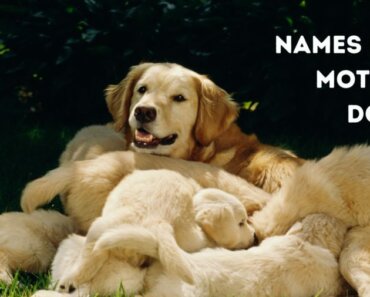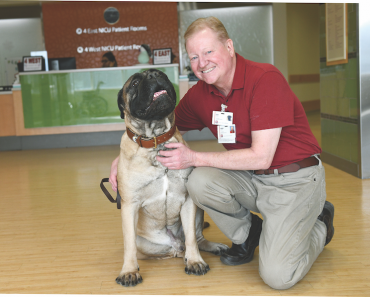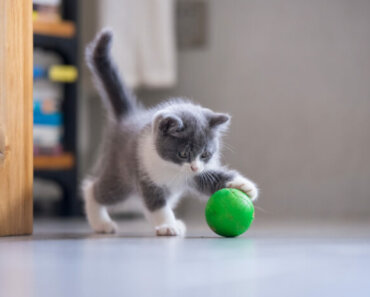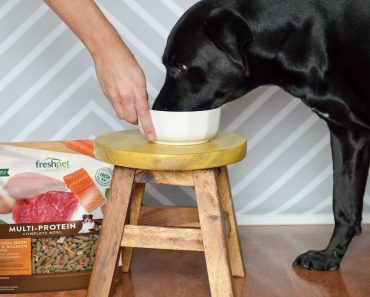Good nutrition, along with the right forms of food, can go a long way to improving your dog or cat’s dental health.
Dental health is a very important part of your dog or cat’s overall health. Periodontal disease not only causes a lot of pain and discomfort, but it’s linked to systemic diseases of the kidneys, liver and heart. Your animal should receive a thorough dental examination at least once a year, while home dental care can help maintain good oral hygiene in between vet visits. One of the most important ways to improve dental health is to feed your dog or cat the correct diet.
 Diet can minimize plaque and calculus
Diet can minimize plaque and calculus
The most important factor influencing the development of gingivitis and periodontal disease is the presence and persistence of plaque on tooth surfaces. These deposits put pressure on the gums, causing inflammation, swelling and receding gums. Pockets form between the gums and teeth where more debris collects, worsening the problem. A serious complication is the development of a painful abscess, which destroys the root of the tooth. Bleeding gums, foul breath, excessive salivation, painful chewing, dropping food while eating, turning the head to one side while eating, and possibly loss of appetite or weight are all symptoms of severe dental disease.
Diet can play an important role in minimizing plaque and calculus formation, and aid in the removal of plaque that has already formed. The type of diet fed, along with the frequency of tooth brushing and access to chew toys, dental chews and hard chews, will factor into either the persistence or removal of plaque.
Once plaque has formed on the surface of the tooth, it is most efficiently removed by mechanical abrasion. This can be accomplished through diet, tooth brushing, or chewing on supplemental toys or foods.
The form of the food is key
Historically, the form of food given to dogs and cats has been implicated as a potential risk factor for the development of dental disease. Studies concluded that dogs and cats fed exclusively soft diets such as canned or home-cooked foods had more dental calculus and periodontal disease than dogs and cats fed primarily dry kibble or a mixture of soft food with kibble.
 However, even the kibble-fed dogs and cats had significant dental disease, including plaque accumulation, gingivitis and periodontal disease. One reason for this is the high carbohydrate concentration found in most commercial kibbles, which provide sugars that feed bacteria in the mouth.
However, even the kibble-fed dogs and cats had significant dental disease, including plaque accumulation, gingivitis and periodontal disease. One reason for this is the high carbohydrate concentration found in most commercial kibbles, which provide sugars that feed bacteria in the mouth.
Also, contrary to popular belief, the consumption of dry food does not provide enough mechanical abrasion to prevent the development of plaque and dental disease. Studies showed no significant association between feeding a diet made up exclusively of dry pet food and the reduction of calculus, gingivitis or tooth attachment loss.
Raw food also improves dental health
Raw-fed dogs and cats may have less gingivitis and periodontal disease, but this depends on breed as well as diet. Some dogs are not suited to eat raw meat and vegetables or to chew on bones because they lack the tooth structure, jaws and strength to do so. Eating raw bones and raw meat is better suited to breeds that have strong jaws and long muzzles, including working and hunting dogs. Small dogs that were bred as house companions have evolved eating cooked meats, grains and vegetables. These dogs developed smaller teeth because they ate more starches and vegetables by living with people who farmed instead of hunted. Specifically, the jaws of brachycephalic (short-muzzled) breeds are not mechanically designed to be able to chew bones effectively.
However, raw food does contain natural enzymes that help prevent tarter buildup. Raw meat does not stick to the teeth like the starches found in dry kibble diets. Raw diets with larger pieces of muscle meat that must be chewed are more effective at reducing tarter and plaque. While dry kibble is touted as having an abrasive action on the teeth, most animals swallow the pieces whole without thoroughly chewing. Dry dog food formulated into very large pieces is more effective at removing tarter in canines.
Raw bones provide mechanical abrasion
Raw meaty bones will help keep teeth clean. Bones must be fed raw. Boiling a bone for at least one hour or cooking it in a pressure cooker will soften it if the animal cannot tolerate raw bones. Baked or broiled bones are likely to splinter and damage the mouth and digestive tract.
Bones should be given after meals for 20 minutes of chewing, then wrapped and refrigerated for the following day, or discarded. Shank or knuckle bones are appropriate for large breeds, while rib bones may be better for medium dogs. Small dogs and cats can be fed the tips of chicken wings, duck or chicken necks, or smaller marrow bones. Bones should be introduced with care and supervision. Offer bones that cannot be swallowed whole.
Inappropriate feeding of bones can cause constipation (too much bone in the diet), gastric irritation, obstructions and perforations. Do not offer bones when your animal is hungry and likely to overeat or gulp. Do not offer brittle or sharp bones. Make sure the dog or cat is chewing, and not swallowing whole bone.
Chewing on bones and toys provides the mechanical abrasion necessary to decrease plaque accumulation on the teeth. Animals should have at least one or two chewing opportunities per day. Hard biscuit-type treats did not improve dental health in veterinary studies.
Foods that help repair gum tissue
Gingivitis and stomatitis result in painful gums. Repair of gum tissue will be hastened if the diet contains vegetables rich in niacin, folate and minerals, such as dark leafy greens (kale, collards and dandelion), broccoli and asparagus. Fresh liver and eggs also contain folate and vitamin A; the latter is very beneficial for healing mucous membranes. Bone broth can help strengthen teeth and daily probiotics will provide beneficial bacteria in the mouth.
With a proper diet, good nutrition and daily attention to oral hygiene, your dog or cat can maintain healthy teeth and gums well into old age.



























